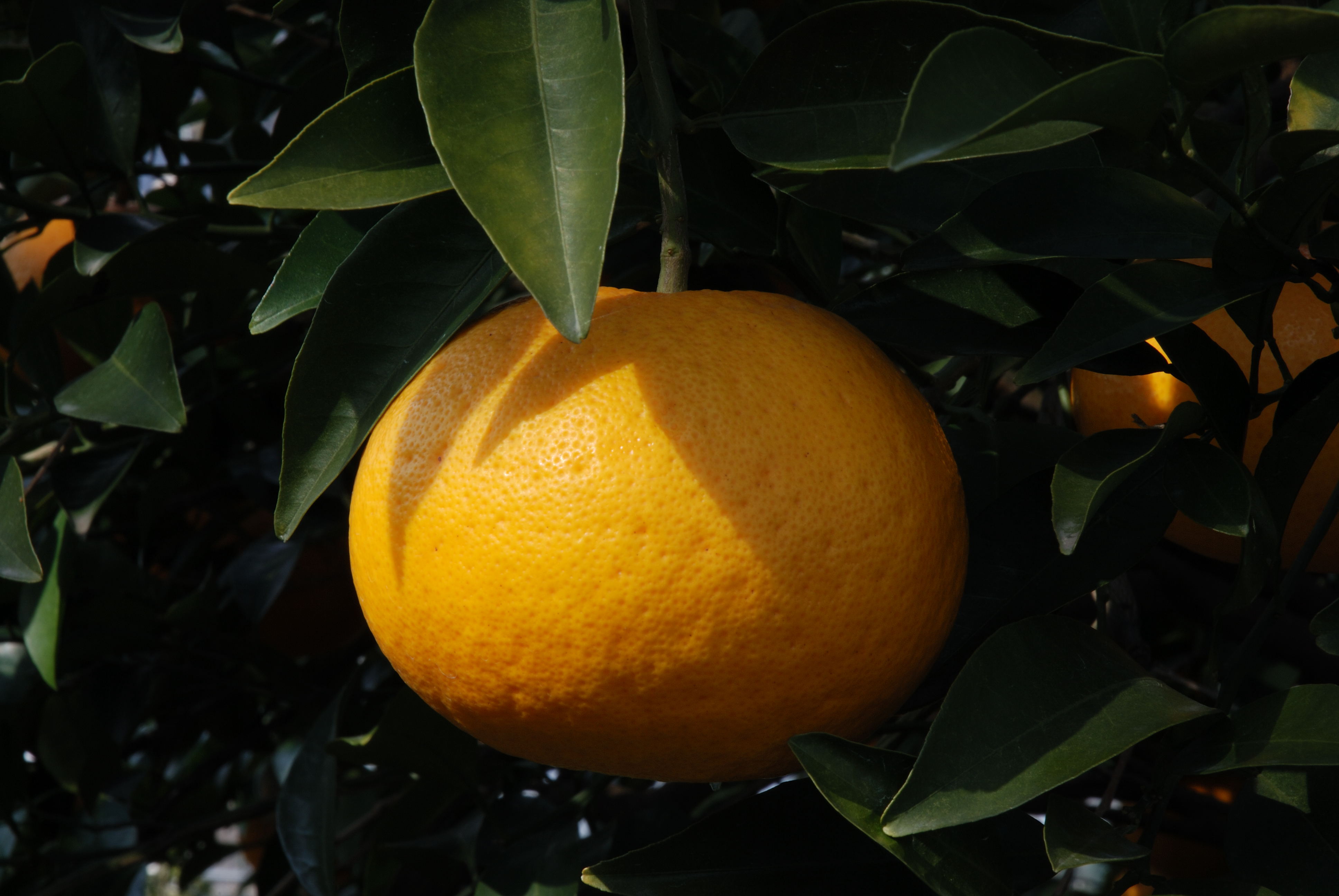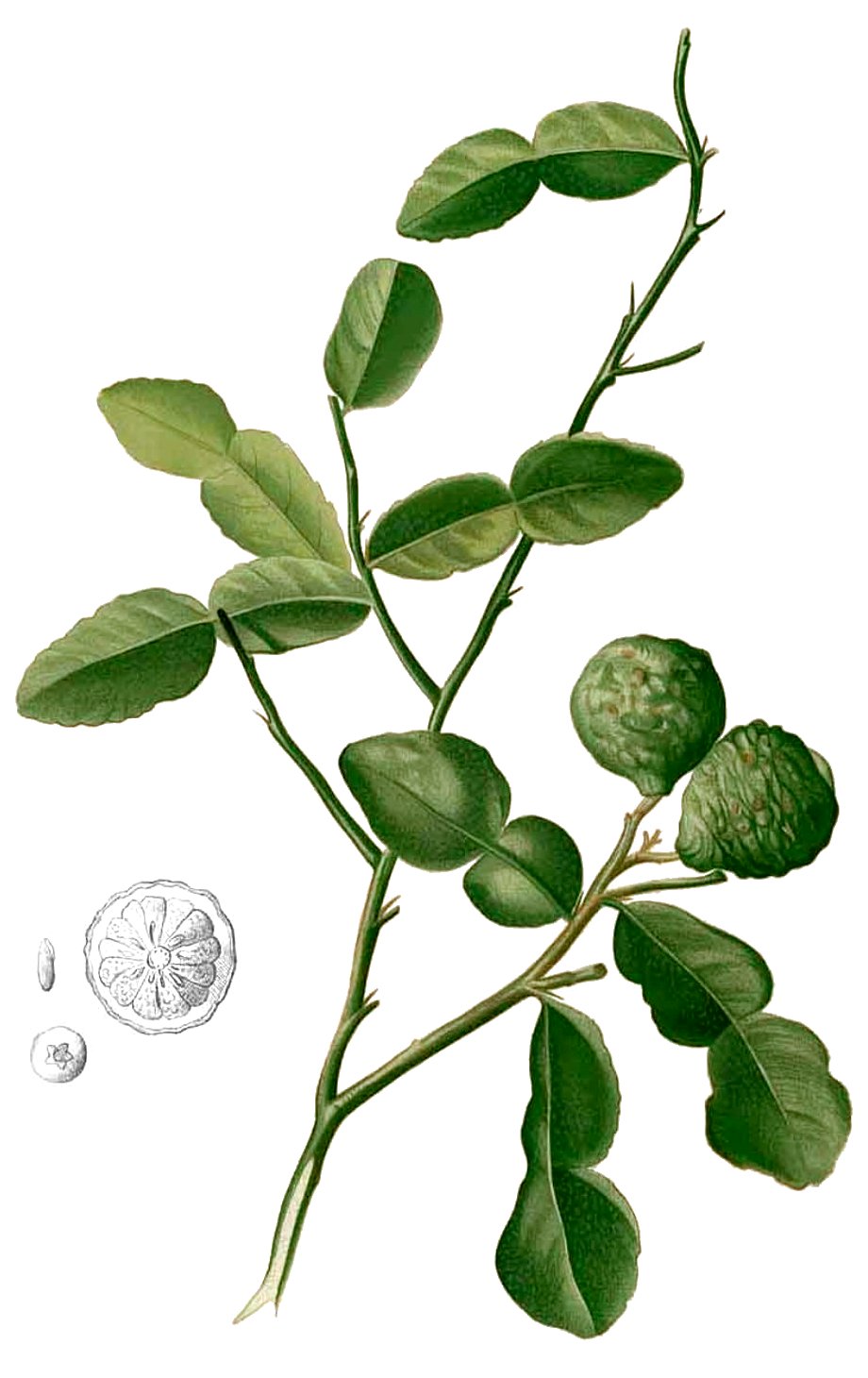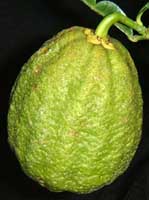|
Citrus
''Citrus'' is a genus of flowering trees and shrubs in the rue family, Rutaceae. Plants in the genus produce citrus fruits, including important crops such as oranges, lemons, grapefruits, pomelos, and limes. The genus ''Citrus'' is native to South Asia, East Asia, Southeast Asia, Melanesia, and Australia. Various citrus species have been used and domesticated by indigenous cultures in these areas since ancient times. From there its cultivation spread into Micronesia and Polynesia by the Austronesian expansion (c. 3000–1500 BCE); and to the Middle East and the Mediterranean (c. 1200 BCE) via the incense trade route, and onwards to Europe and the Americas. History Citrus plants are native to subtropical and tropical regions of Asia, Island Southeast Asia, Near Oceania, and northeastern Australia. Domestication of citrus species involved much hybridization and introgression, leaving much uncertainty about when and where domestication first happened. A genomic, phylo ... [...More Info...] [...Related Items...] OR: [Wikipedia] [Google] [Baidu] |
List Of Citrus Fruits
This is a list of citrus fruits: Hybrid Citron Papeda See also * List of lemon dishes and drinks This is a list of lemon dishes and drinks, in which lemon is used as a primary ingredient. Lemon is a small evergreen tree native to Asia, and the tree's ellipsoidal yellow fruit. The fruit is used for culinary and non-culinary purposes throughou ... External links"The Citrus Family Tree" ''National Geographic'' {{DEFAULTSORT:Citrus Fruits, List Of * Lists of foods Lists of plants ... [...More Info...] [...Related Items...] OR: [Wikipedia] [Google] [Baidu] |
Mandarin Orange
The mandarin orange (''Citrus reticulata''), also known as the mandarin or mandarine, is a small citrus tree fruit. Treated as a distinct species of orange, it is usually eaten plain or in fruit salads. Tangerines are a group of orange-coloured citrus fruit consisting of hybrids of mandarin orange with some pomelo contribution. Mandarins are smaller and oblate, unlike the spherical common oranges (which are a mandarin– pomelo hybrid). The taste is considered sweeter and stronger than the common orange. A ripe mandarin is firm to slightly soft, heavy for its size, and pebbly-skinned. The peel is thin, loose, with little white mesocarp, so they are usually easier to peel and to split into segments. Hybrids usually have these traits to a lesser degree. The mandarin is tender and is damaged easily by cold. It can be grown in tropical and subtropical areas. According to genetic studies, the mandarin was one of the original citrus species; through breeding or natural hy ... [...More Info...] [...Related Items...] OR: [Wikipedia] [Google] [Baidu] |
Orange (fruit)
An orange is a fruit of various citrus species in the family Rutaceae (see list of plants known as orange); it primarily refers to ''Citrus'' × ''sinensis'', which is also called sweet orange, to distinguish it from the related ''Citrus × aurantium'', referred to as bitter orange. The sweet orange reproduces asexually ( apomixis through nucellar embryony); varieties of sweet orange arise through mutations. The orange is a hybrid between pomelo (''Citrus maxima'') and mandarin (''Citrus reticulata''). The chloroplast genome, and therefore the maternal line, is that of pomelo. The sweet orange has had its full genome sequenced. The orange originated in a region encompassing Southern China, Northeast India, and Myanmar, and the earliest mention of the sweet orange was in Chinese literature in 314 BC. , orange trees were found to be the most cultivated fruit tree in the world. Orange trees are widely grown in tropical and subtropical climates for their sweet frui ... [...More Info...] [...Related Items...] OR: [Wikipedia] [Google] [Baidu] |
Orange (fruit)
An orange is a fruit of various citrus species in the family Rutaceae (see list of plants known as orange); it primarily refers to ''Citrus'' × ''sinensis'', which is also called sweet orange, to distinguish it from the related ''Citrus × aurantium'', referred to as bitter orange. The sweet orange reproduces asexually ( apomixis through nucellar embryony); varieties of sweet orange arise through mutations. The orange is a hybrid between pomelo (''Citrus maxima'') and mandarin (''Citrus reticulata''). The chloroplast genome, and therefore the maternal line, is that of pomelo. The sweet orange has had its full genome sequenced. The orange originated in a region encompassing Southern China, Northeast India, and Myanmar, and the earliest mention of the sweet orange was in Chinese literature in 314 BC. , orange trees were found to be the most cultivated fruit tree in the world. Orange trees are widely grown in tropical and subtropical climates for their sweet frui ... [...More Info...] [...Related Items...] OR: [Wikipedia] [Google] [Baidu] |
Bitter Orange
Bitter orange, Seville orange, bigarade orange, or marmalade orange is the citrus tree ''Citrus'' × ''aurantium'' and its fruit. It is native to Southeast Asia and has been spread by humans to many parts of the world. It is probably a cross between the pomelo, ''Citrus maxima'', and the mandarin orange, ''Citrus reticulata''. History Wild trees are found near small streams in generally secluded and wooded parts of Florida and the Bahamas after it was introduced to the area from Spain, where it had been introduced and cultivated heavily beginning in the 10th century by the Moors. Identification Citrus × aurantium can be identified through its orange fruit with a distinctly bitter or sour taste. The tree has alternate simple leaves and thorns on its petiole. Usage Many varieties of bitter orange are used for their essential oil, and are found in perfume, used as a flavoring or as a solvent, and also for consumption. The Seville orange variety is used in the production o ... [...More Info...] [...Related Items...] OR: [Wikipedia] [Google] [Baidu] |
Lemon
The lemon (''Citrus limon'') is a species of small evergreen trees in the flowering plant family Rutaceae, native to Asia, primarily Northeast India (Assam), Northern Myanmar or China. The tree's ellipsoidal yellow fruit is used for culinary and non-culinary purposes throughout the world, primarily for its juice, which has both culinary and cleaning uses. The pulp and rind are also used in cooking and baking. The juice of the lemon is about 5% to 6% citric acid, with a pH of around 2.2, giving it a sour taste. The distinctive sour taste of lemon juice makes it a key ingredient in drinks and foods such as lemonade and lemon meringue pie. History The origin of the lemon is unknown, though lemons are thought to have first grown in Assam (a region in northeast India), northern Myanmar or China. A genomic study of the lemon indicated it was a hybrid between bitter orange (sour orange) and citron. Lemons are supposed to have entered Europe near southern Italy no later ... [...More Info...] [...Related Items...] OR: [Wikipedia] [Google] [Baidu] |
Citron
The citron (''Citrus medica''), historically cedrate, is a large fragrant citrus fruit with a thick rind. It is said to resemble a 'huge, rough lemon'. It is one of the original citrus fruits from which all other citrus types developed through natural hybrid speciation or artificial hybridization. Though citron cultivars take on a wide variety of physical forms, they are all closely related genetically. It is used in Asian cuisine, traditional medicines, perfume, and religious rituals and offerings. Hybrids of citrons with other citrus are commercially more prominent, notably lemons and many limes. Etymology The fruit's English name "citron" derives ultimately from Latin, ''citrus'', which is also the origin of the genus name. Other languages A source of confusion is that '' citron'' in French and English are false friends, as the French word refers to the lemon, while the English word is translated ''cédrat''. Indeed, into the 16th century, the English name ''citron'' ... [...More Info...] [...Related Items...] OR: [Wikipedia] [Google] [Baidu] |
Kaffir Lime
''Citrus hystrix'', called the kaffir lime or makrut lime, (, ) is a citrus fruit native to tropical Southeast Asia. Its fruit and leaves are used in Southeast Asian cuisine, and its essential oil is used in perfumery. Its rind and crushed leaves emit an intense citrus fragrance. Names "Kaffir" is thought to ultimately derive from the Arabic ''kafir'', meaning ''infidel'', though the mechanism by which it came to be applied to the lime is uncertain. Following the takeover of the Swahili coast, Muslims used the term to refer to the non-Muslim indigenous Africans, who were increasingly abducted for the Indian Ocean slave trade, which reached a height in the fifteenth and sixteenth century. The most likely etymology is through the Kaffirs, an ethnic group in Sri Lanka partly descended from enslaved Bantu. The earliest known reference, under the alternative spelling "caffre" is in the 1888 book ''The Cultivated Oranges, Lemons Etc. of India and Ceylon'' by Emanuel Bonavia, who ... [...More Info...] [...Related Items...] OR: [Wikipedia] [Google] [Baidu] |
Kumquat
Kumquats (; zh, 金桔), or cumquats in Australian English, are a group of small fruit-bearing trees in the flowering plant family Rutaceae. Their taxonomy is disputed. They were previously classified as forming the now-historical genus ''Fortunella'' or placed within ''Citrus'', . Different classifications have alternatively assigned them to anywhere from a single species, ''C. japonica'', to numerous species representing each cultivar. Recent genomic analysis would define three pure species, ''Citrus hindsii'', ''C. margarita'' and ''C. crassifolia'', with ''C. x japonica'' being a hybrid of the last two. The edible fruit closely resembles the orange (''Citrus sinensis'') in color and shape but is much smaller, being approximately the size of a large olive. The kumquat is a fairly cold-hardy citrus. Etymology The English name "kumquat" is a borrowing of the Cantonese ''gāmgwāt'' (). Origin The kumquat plant is native to Southern China. The historical reference t ... [...More Info...] [...Related Items...] OR: [Wikipedia] [Google] [Baidu] |
Lime (fruit)
A lime (from French ''lime'', from Arabic ''līma'', from Persian ''līmū'', "lemon") is a citrus fruit, which is typically round, green in color, in diameter, and contains acidic juice vesicles. There are several species of citrus trees whose fruits are called limes, including the Key lime (''Citrus aurantiifolia''), Persian lime, Makrut lime, and desert lime. Limes are a rich source of vitamin C, are sour, and are often used to accent the flavours of foods and beverages. They are grown year-round. Plants with fruit called "limes" have diverse genetic origins; limes do not form a monophyletic group. Plants known as "lime" The difficulty in identifying exactly which species of fruit are called lime in different parts of the English-speaking world (and the same problem applies to synonyms in other European languages) is increased by the botanical complexity of the citrus genus itself, to which the majority of limes belong. Species of this genus hybridise readily, and it ... [...More Info...] [...Related Items...] OR: [Wikipedia] [Google] [Baidu] |
Citrus Micrantha
The micrantha is a wild citrus from the papeda group, native to southern Philippines, particularly islands of Cebu and Bohol. Two varieties are recognized: small-flowered papeda (''C. hystrix'' var. ''micrantha''), locally known as ''biasong'', and small-fruited papeda (''C. hystrix'' var. ''microcarpa'') or ''samuyao''. Long viewed as a separate species, ''C. micrantha'', it is now generally viewed to fall within ''Citrus hystrix'', but genomic data on the latter is insufficient for a definitive conclusion. A micrantha was one of the progenitor species of some varieties of lime. Description The micrantha was first described to Western science in 1915 by Peter Jansen Wester, who worked for the Philippine Bureau of Agriculture at the time. Biasong Wester collected ripe fruit specimens of biasong (small-flowered papeda, ''Citrus hystrix'' var. ''micrantha'') on islands of Cebu, Bohol, Dumaguete, Negros, and in the Zamboanga and Misamis provinces in Mindanao. The fru ... [...More Info...] [...Related Items...] OR: [Wikipedia] [Google] [Baidu] |
Papeda (citrus)
Papeda or papaeda is the common name for a group of ''Citrus'' species and varieties native to tropical Asia that are hardy and slow-growing, and produce unpalatable fruit. Walter Tennyson Swingle segregated these species into a separate subgenus, ''Papeda'', that included the Ichang lemon, yuzu, kaffir lime, kabosu, sudachi, and a number of wild and uncultivated species and hybrids. Recent genetic analysis shows the papedas to be distributed among distinct branches of the ''Citrus'' phylogenetic tree, and hence Swingle's proposed subgenus is polyphyletic and not a valid taxonomic grouping, but the term persists as a common name. Because of generally slow growth and bitter, less palatable fruits than in other citruses, papeda species have only limited commercial cultivation. Some species, like ichang papeda, are used in landscaping, while others are important for rootstocking and as genome source for breeding disease-resistant and frost-hardy citrus hybrids. In some cases th ... [...More Info...] [...Related Items...] OR: [Wikipedia] [Google] [Baidu] |



.jpg)






